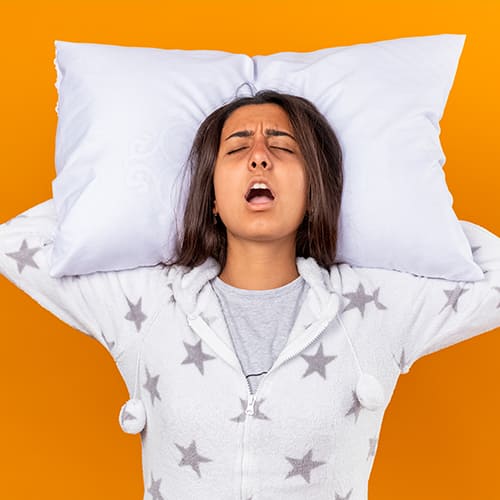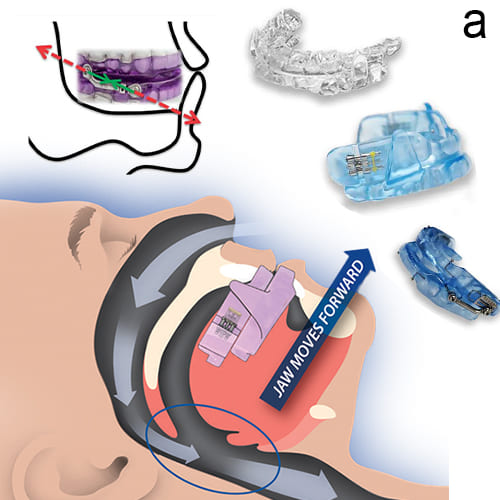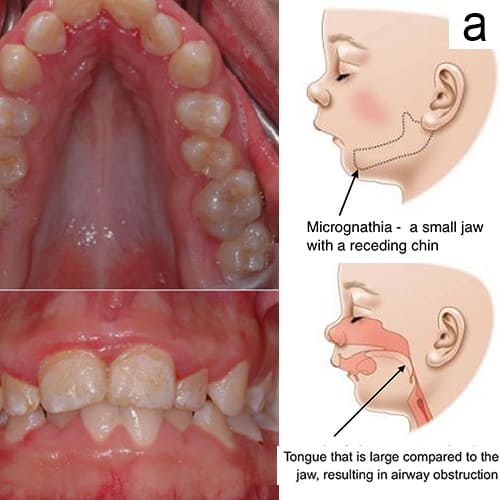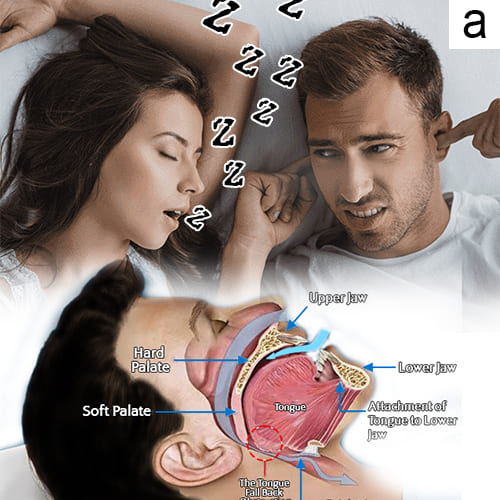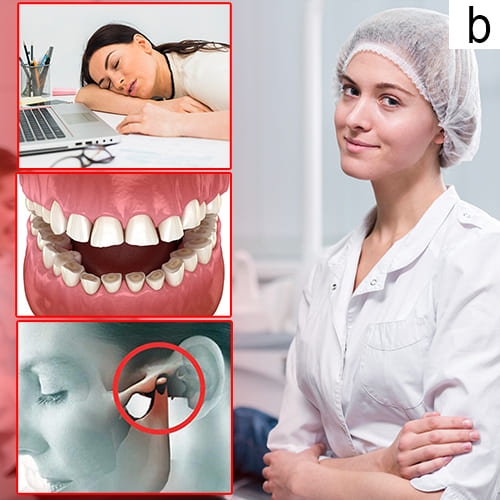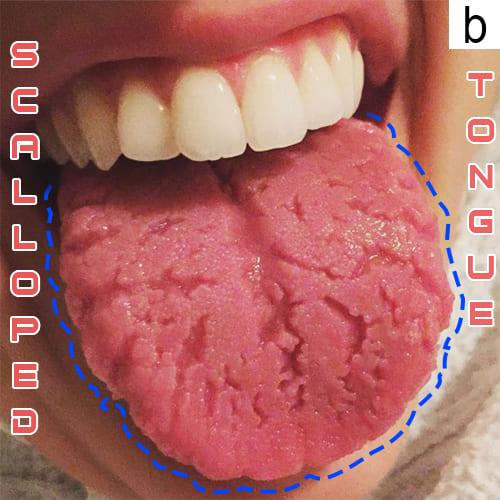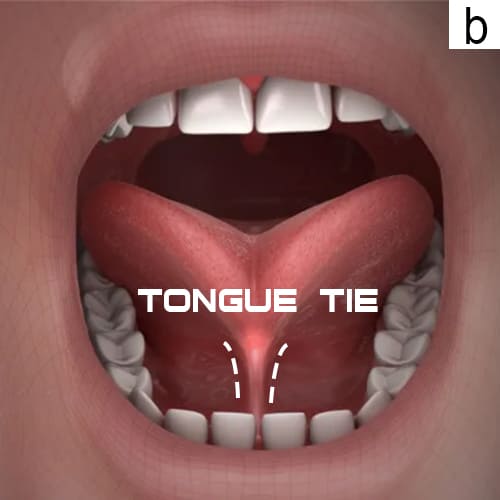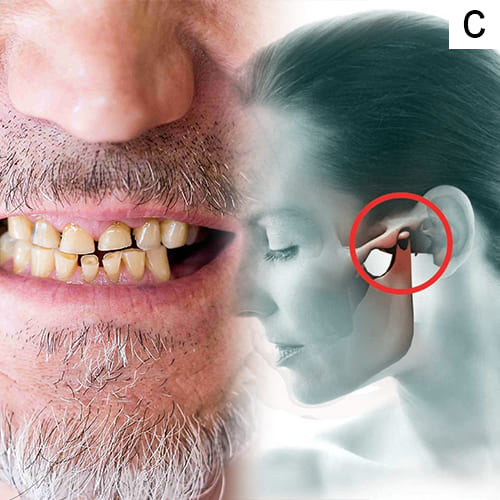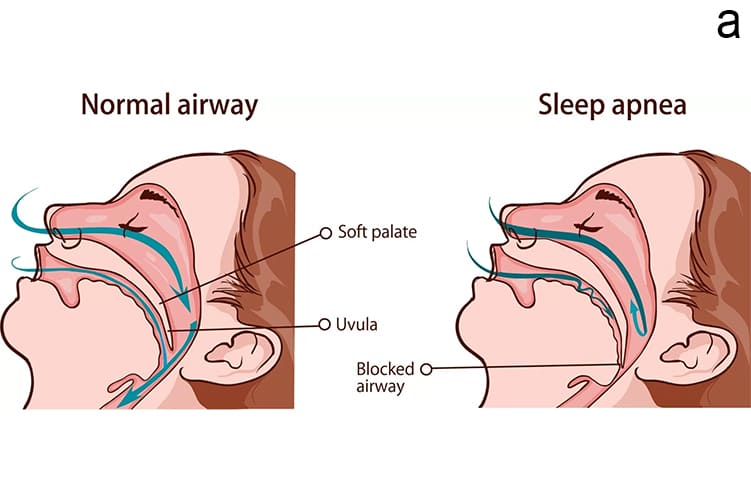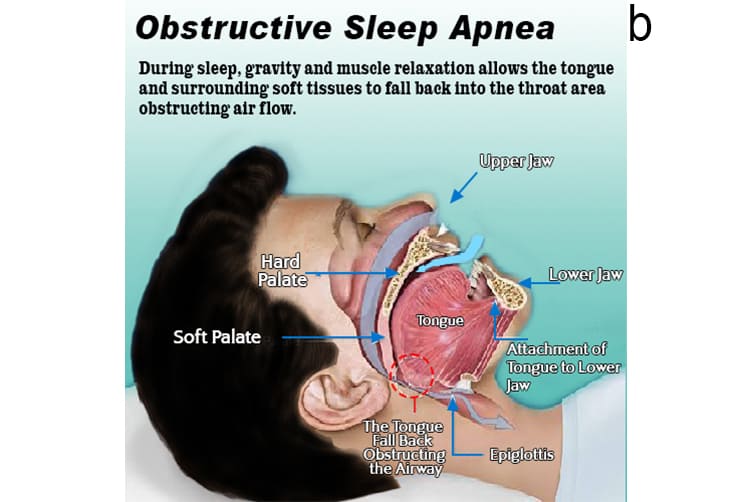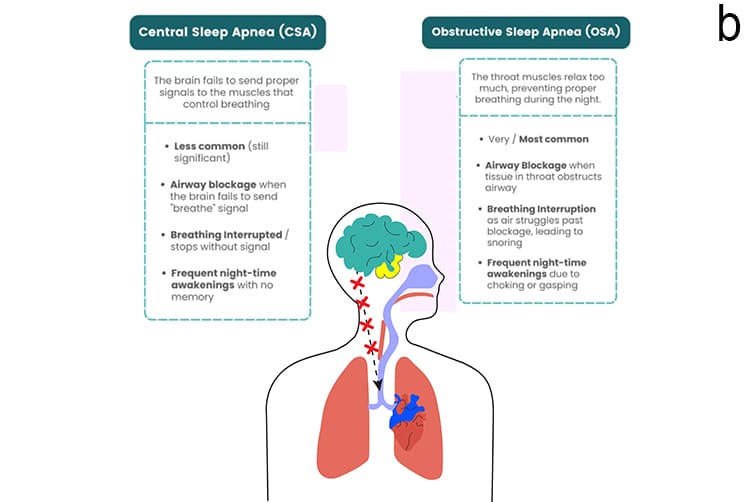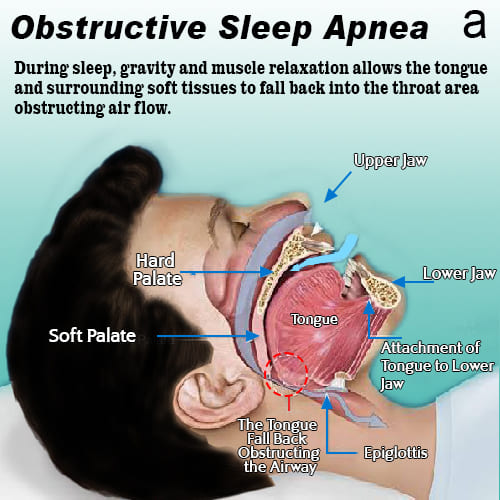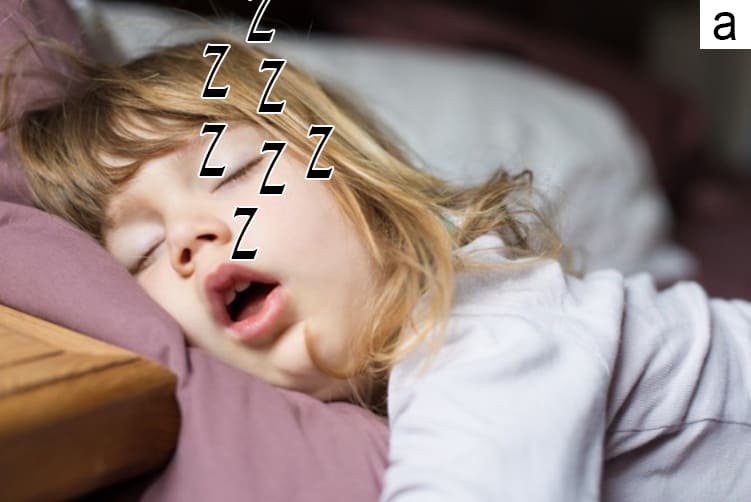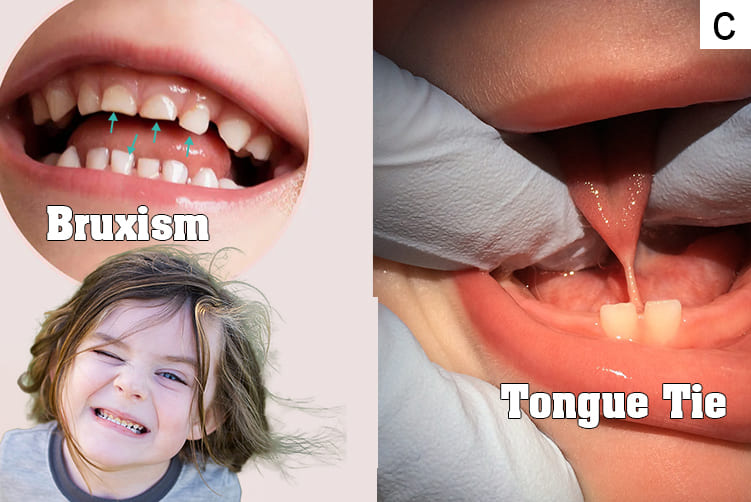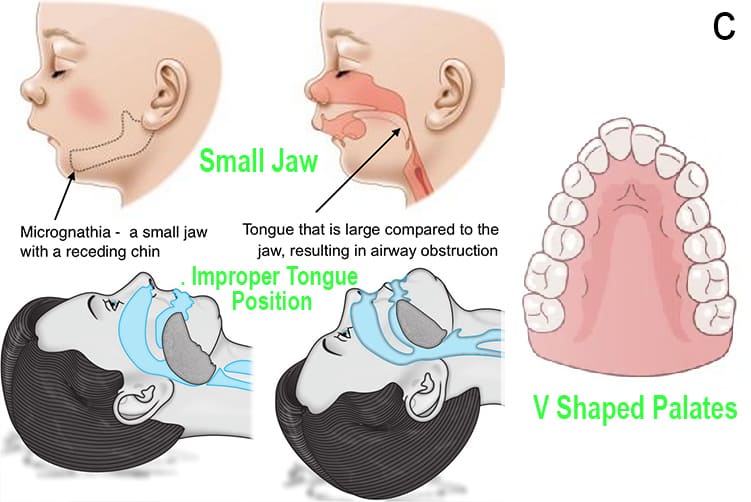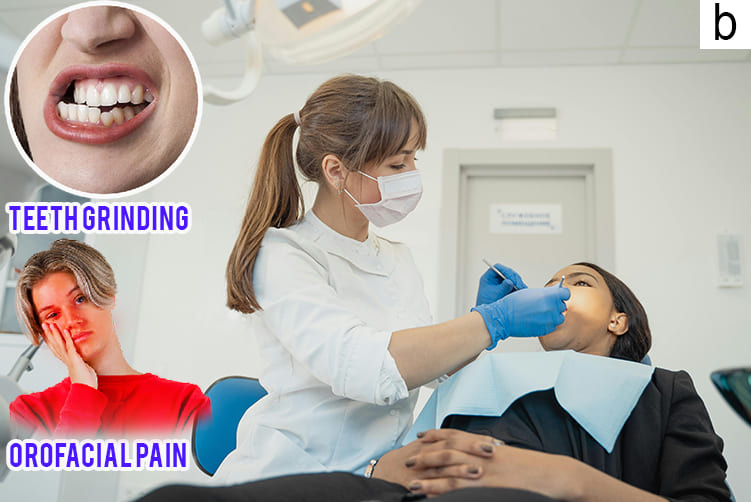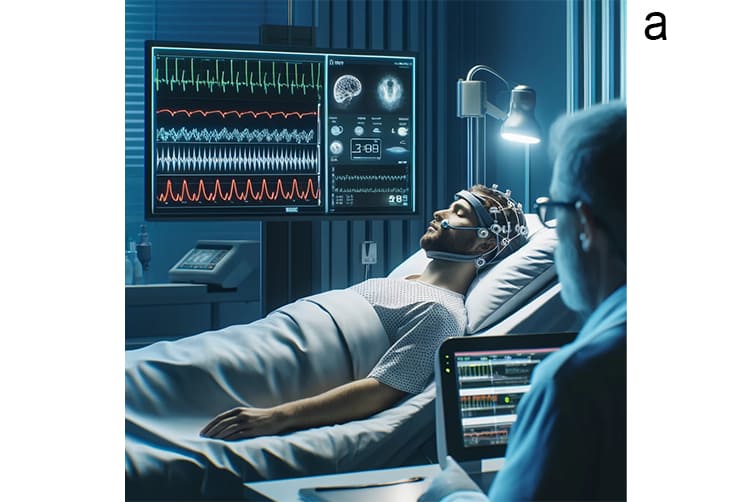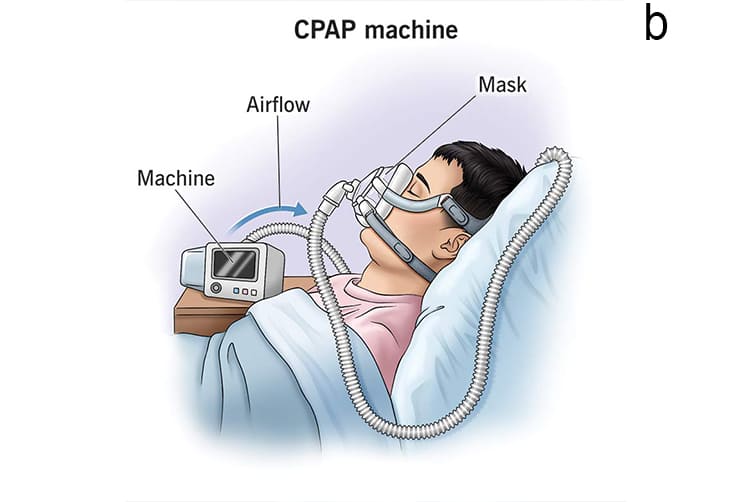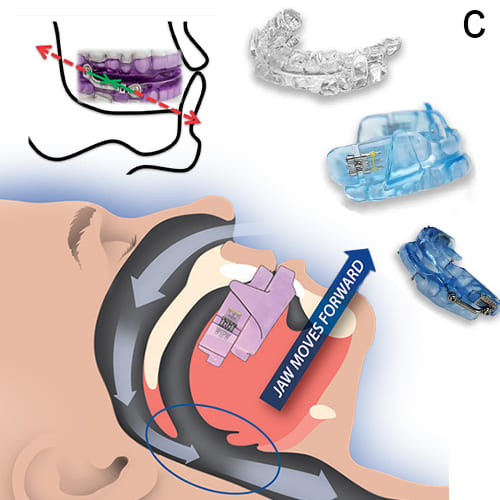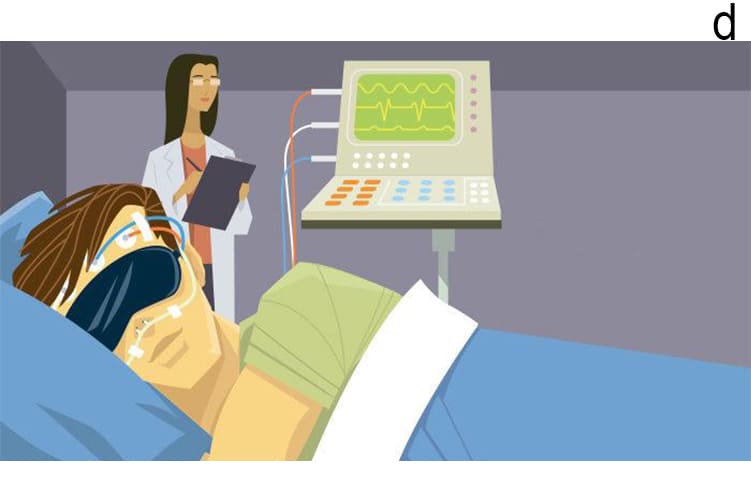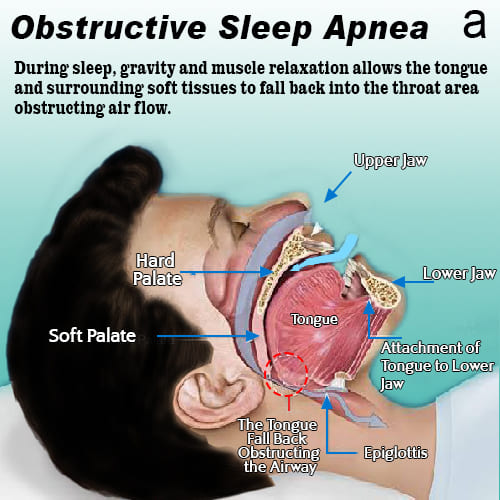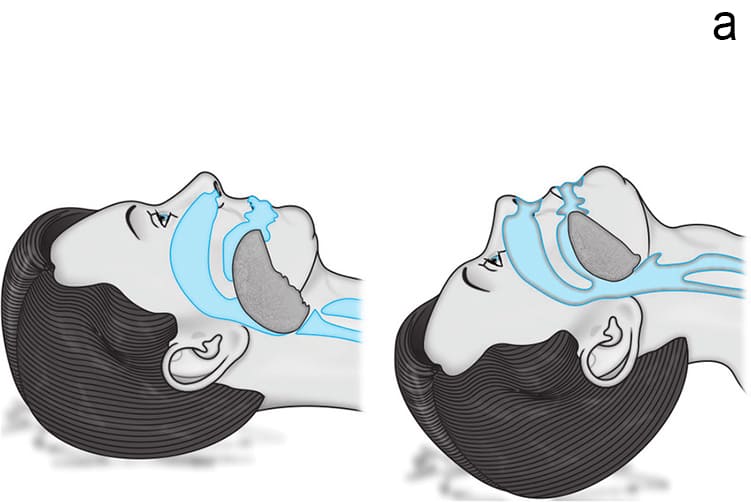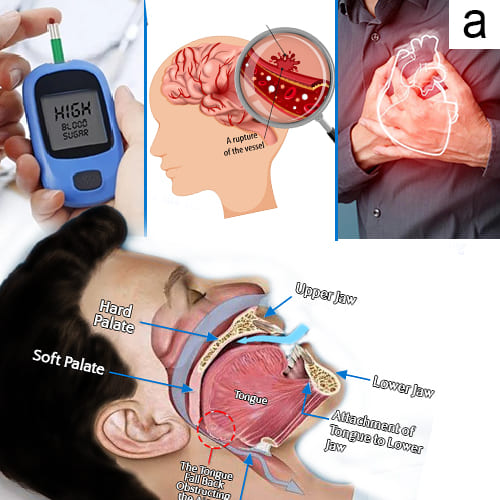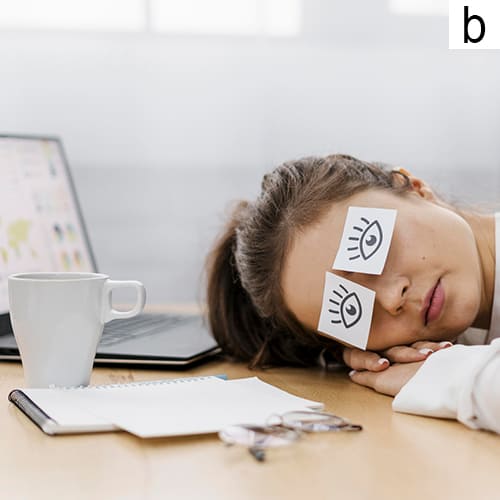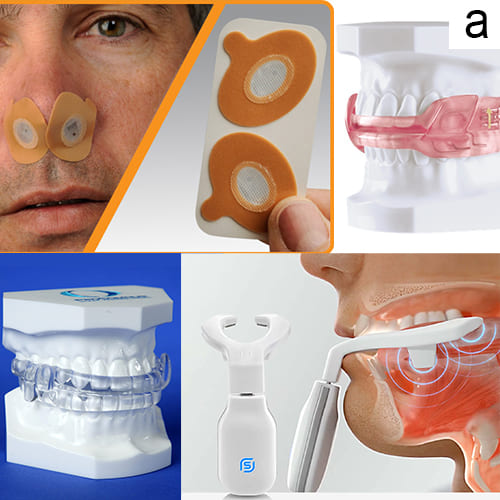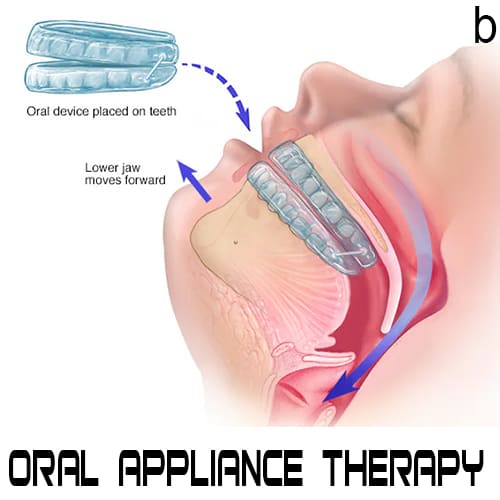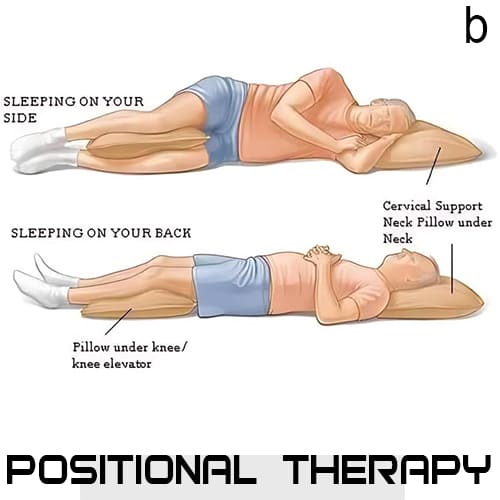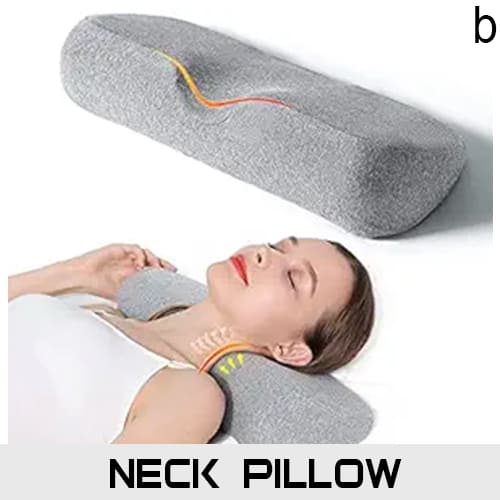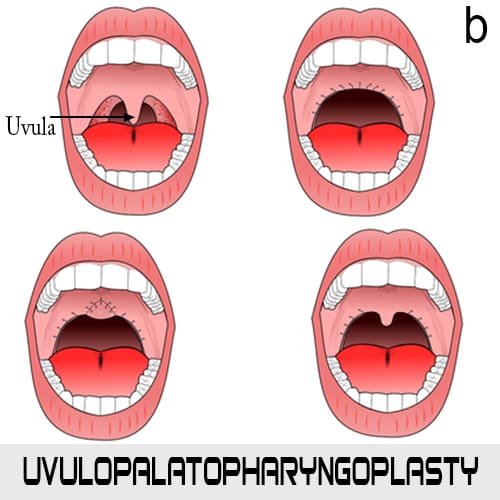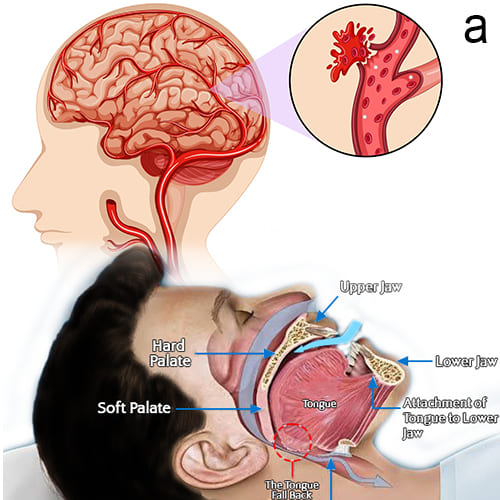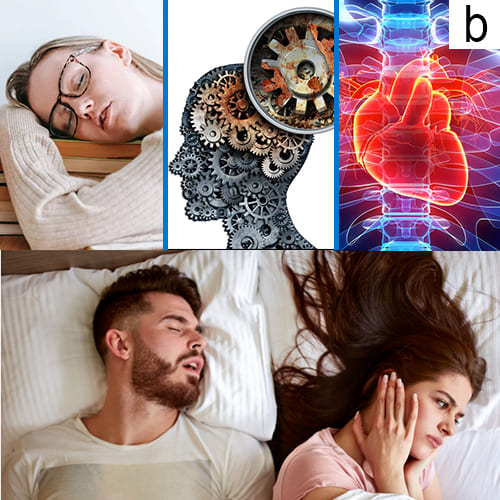What is dental sleep medicine?
Dental sleep medicine is a specialized area of dentistry that focuses on diagnosing and treating sleep-related disorders, particularly those affecting breathing during sleep. Here are three key points to understand this field:
a. Focus on Sleep-Related Breathing Disorders
Dental sleep medicine primarily addresses conditions like snoring and Obstructive Sleep Apnea (OSA), where the airway becomes blocked during sleep. The discipline uses Oral Appliance Therapy (OAT), which involves custom-fitted devices that help keep the airway open by repositioning the jaw and tongue. This therapy is beneficial for individuals with a small jaw, high arched palate or anatomical issues such as a V-shaped jaw, which can contribute to airway obstruction.
b. Impact of Tongue Position and Related Conditions
The position of the tongue is crucial in maintaining an open airway. A properly positioned tongue prevents collapse during sleep, while conditions like a scalloped tongue may indicate limited space in the mouth, potentially leading to OSA. Additionally, issues like tongue tie restrict tongue movement, further complicating breathing during sleep. These anatomical factors are essential in assessing and treating patients with sleep disorders
c. Associated Disorders and Symptoms
Dental sleep medicine also encompasses related conditions such as sleep bruxism (teeth grinding), which can cause dental damage and jaw pain and Temporomandibular Joint Dysfunction (TMJ), leading to discomfort in the jaw area. Other symptoms that may arise include excessive daytime sleepiness, fatigue and irritability due to disrupted sleep patterns caused by these disorders. Understanding these associations helps in providing comprehensive care for patients experiencing sleep-related issues.
What is sleep Apnea?
a. Sleep apnea is a serious sleep disorder characterized by repeated interruptions in breathing during sleep, leading to disrupted sleep patterns and reduced oxygen levels in the body.
b. The most common form, obstructive sleep apnea, occurs when the throat muscles relax excessively, blocking the airway, while central sleep apnea involves the brain failing to send signals to breathe.
What is Obstructive Sleep Apnea?
a. Obstructive Sleep Apnea (OSA) is a condition where the airway becomes blocked during sleep, causing breathing to stop and start repeatedly.
b. This can lead to loud snoring and excessive daytime sleepiness, affecting overall health.
c. This condition can lead to excessive daytime sleepiness and other serious health issues if left untreated.
Snoring in Children?
a. Snoring in children can occur when their airways are blocked, often due to enlarged tonsils and adenoids, allergies, or dental issues like crowded teeth.
b. Dentists can help by checking for any dental problems that might contribute to snoring and recommend treatments to improve airflow during sleep.
Here are key points to understand the factors related to snoring in children:
1. Physical Factors Contributing to Snoring
Several anatomical features can lead to snoring in children:
a. Bruxism and Teeth Clenching
Children who experience bruxism, or teeth grinding, may also snore. This condition often occurs during sleep and can lead to tension in the jaw muscles, which may further narrow the airway. Additionally, teeth clenching can contribute to discomfort and may affect how a child breathes at night.
b.Tongue Tie: This condition limits the movement of the tongue, which can affect how well the airway stays open.
d. Small Jaw Size: A smaller jaw may not provide enough space for the tongue, increasing the likelihood of airway obstruction while sleeping.
e. Improper Tongue Position
The position of the tongue during sleep is crucial for maintaining an open airway. If the tongue falls back into the throat due to improper positioning, it can obstruct airflow and cause snoring. Ensuring that the tongue is properly positioned can help reduce snoring and improve sleep quality.
f. V-Shaped Palate: A narrow or V-shaped palate can restrict airflow, making it difficult for the child to breathe normally during sleep.
If a child snores frequently or loudly, it’s important for parents to consult a healthcare provider to explore these factors and determine if treatment is needed. Addressing these issues early can help improve a child's overall health and quality of sleep.
Why is dental sleep Medicine important?
Dental sleep medicine is important for several reasons. Here are two key points that highlight its significance:
a. Improving Sleep Quality and Overall Health
Dental sleep medicine plays a crucial role in diagnosing and treating sleep disorders like obstructive sleep apnea (OSA), which can significantly disrupt sleep. Poor sleep quality can lead to daytime fatigue, irritability, and a higher risk of serious health issues such as heart disease, diabetes, and high blood pressure. By addressing these disorders through treatments like oral appliances or CPAP machines, dental sleep medicine helps improve sleep quality and overall health.
b. Comprehensive Management of Related Conditions
Dentists trained in dental sleep medicine not only focus on sleep apnea but also manage related conditions such as sleep bruxism (teeth grinding) and orofacial pain. These issues can affect a person's quality of life and dental health. By recognizing and treating these interconnected problems, dental sleep medicine provides a holistic approach to care, ensuring patients receive comprehensive treatment that benefits both their dental health and their ability to sleep well.
How is dental sleep medicine implemented?
Dental sleep medicine is implemented through a sleep physician or a sleep dentist a structured approach that involves diagnosing sleep-related breathing disorders and providing effective treatments. Here are key points outlining how this process works:
a. Diagnosis Using Polysomnography
•The first step in dental sleep medicine is diagnosing conditions like obstructive sleep apnea (OSA) through a polysomnograph. This comprehensive sleep study records various body functions during sleep, including brain activity, eye movement, heart rate, and breathing patterns. The data collected helps healthcare providers determine the severity of the sleep disorder and tailor appropriate treatment options.
b.Treatment with CPAP: Once diagnosed, one of the most common treatments is the CPAP (Continuous Positive Airway Pressure) machine. This device delivers a steady flow of air through a mask worn during sleep, keeping the airway open and preventing interruptions in breathing. This helps improve sleep quality and reduces health risks associated with untreated sleep apnea.
c. Treatment with Oral Appliances
•Once diagnosed, patients may be treated with oral appliances, also known as mandibular advancement devices. These custom-made devices are designed to reposition the jaw and tongue to keep the airway open during sleep, effectively reducing snoring and preventing airway obstruction. Sleep Dentists work closely with Physicians to ensure these appliances are properly fitted and adjusted, enhancing patient comfort and treatment effectiveness.
d. Follow-Up and Monitoring
•After initiating treatment, regular follow-up appointments are essential to monitor the effectiveness of the chosen therapy. Patients using CPAP or oral appliances will have their progress assessed to ensure compliance and comfort. Adjustments may be made based on patient feedback and ongoing evaluations to optimize treatment outcomes and improve overall sleep quality.
When should I consider dental sleep Medicine?
Considering dental sleep medicine may be important if you experience certain symptoms or physical characteristics that could indicate sleep-related breathing disorders. Here are two key points to help you understand when to seek this specialized care:
a. Signs of Sleep Disruption
If you notice daytime sleepiness, find yourself sleeping while driving, or experience frequent mouth breathing during sleep, these may be signs of a problem. Other indicators can include snoring or waking up feeling unrefreshed. These symptoms suggest that your sleep quality is affected, possibly due to conditions like obstructive sleep apnea (OSA), where breathing is interrupted during sleep.
b. Physical Indicators
Certain physical traits can also signal the need for dental sleep medicine. If you have a broad neck, pot belly, or a scalloped tongue, these features may increase your risk for sleep apnea. Additionally, the presence of a linea alba (a white line on the inside of the cheeks), worn down ,small teeth can indicate teeth grinding, which is associated with sleep bruxism. These characteristics, combined with your symptoms, suggest that a consultation with a dental sleep specialist could be beneficial for assessing your condition and exploring treatment options.
What if sleep apnea is not treated?
a. If sleep apnea is not treated, it can lead to serious health complications, including increased risks of cardiovascular diseases, diabetes, and stroke due to repeated oxygen deprivation during sleep.
b. Additionally, untreated sleep apnea can result in cognitive decline, daytime fatigue, and a higher likelihood of accidents caused by impaired alertness and concentration.
Myth: only CPAP machines can treat sleep apnea!
a.The myth that only CPAP machines can treat sleep apnea is inaccurate, as there are several effective alternatives available.
b. Non-Invasive Options such as oral appliance therapy, positional therapy, Neck Pillow and Invasive Options such various surgical interventions like Uvulopalatopharyngoplasty (UPPP) can also manage sleep apnea symptoms, particularly for those who cannot tolerate CPAP therapy.
Myth: snoring is harmless and doesn’t require treatment!
a. The myth that snoring is harmless and doesn't require treatment is misleading, as it can be a significant indicator of underlying health issues, such as obstructive sleep apnea.
b. Untreated snoring, especially when associated with sleep apnea, can lead to serious long-term health risks, including cardiovascular problems, daytime fatigue, and impaired cognitive function due to disrupted sleep patterns.
